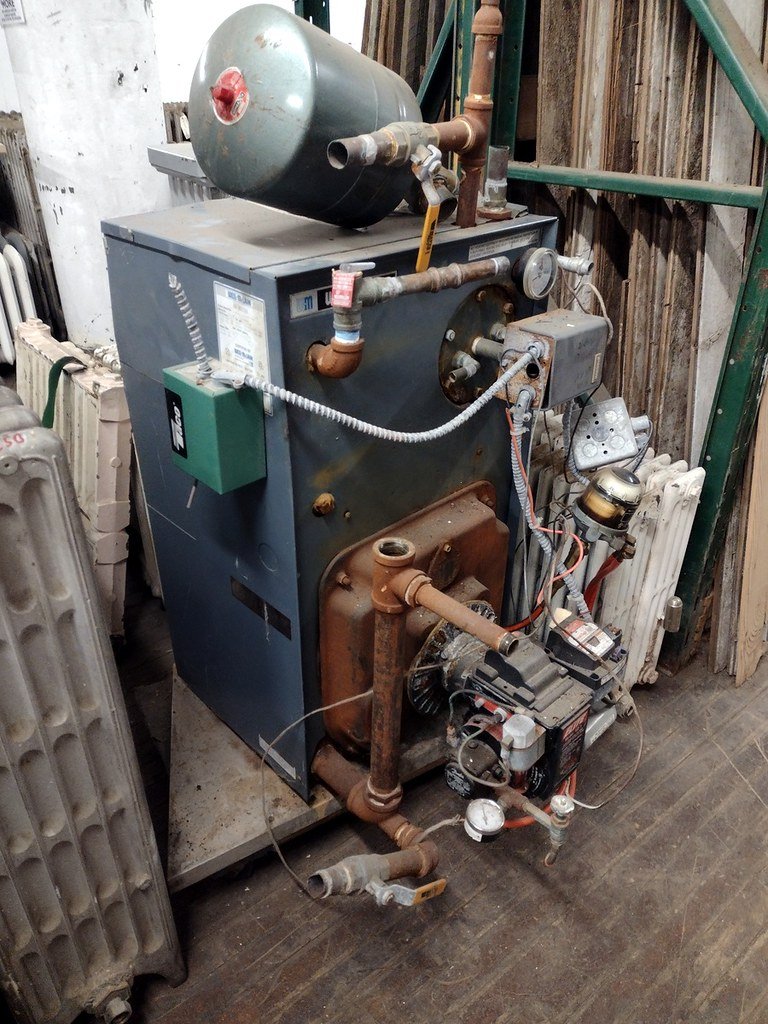As winter approaches, a functional home heater becomes essential for comfort and safety. However, when your heater stops working, it can lead to uncomfortable and potentially hazardous conditions. Fortunately, many heater problems can be resolved with a bit of know-how and the right tools. This article will delve into DIY heater repair, providing you with expert guidance on fixing a heater that won’t heat, assessing your capability to handle repairs yourself, estimating the time required for fixing a heater, and understanding when professional help may be necessary.
Understanding Heater Problems: Common Issues
Understanding the common issues that cause a heater to malfunction is the first step in effective troubleshooting. One prevalent problem is a lack of power, often due to a blown fuse or tripped circuit breaker. Another common issue is a malfunctioning thermostat, which can prevent the heater from receiving the signal to turn on. Burnt-out heating elements or a clogged filter can also impede the efficiency of your heater, leading to inadequate heating.
Other potential issues include a faulty pilot light or ignition system, which is crucial for gas heaters. The pilot light may go out due to a draft or a dirty thermocouple, preventing the heater from igniting. Additionally, airflow problems resulting from blocked vents or ductwork can also hinder the heater’s ability to distribute warm air. Recognizing these common issues can guide you in diagnosing and fixing your heater effectively.

A comprehensive understanding of your heater’s components and how they work can also contribute to diagnosing problems accurately. Familiarize yourself with the parts of your specific heater model, whether it is electric, gas, or oil-fired. This knowledge will empower you to pinpoint problems and approach them with confidence.
How Do You Fixing a Heater That Won’t Heat?
If your heater isn’t providing sufficient warmth, start by checking the power supply. Ensure the heater is plugged in and the circuit breaker hasn’t tripped. If your heater is gas-powered, verify that the gas valve is open and the pilot light is lit. A simple reset of the unit can sometimes resolve unexplained issues.
Next, inspect the thermostat settings. Make sure it’s set to the desired temperature and functioning correctly. Replace the batteries if needed, and if the thermostat is programmable, review the settings to ensure it’s operating on the correct schedule. Calibration errors in thermostats can lead to inaccurate temperature readings, so consider recalibrating or replacing the thermostat if necessary.
Another crucial step is to check and clean or replace filters. Dirty or clogged filters can significantly impact the efficiency of your heater. In addition, examine the blower motor and ensure that it’s not obstructed. Listening for unusual noises can provide clues—squealing or grinding sounds may indicate the need for motor lubrication or replacement.
Tools and Materials Needed for DIY Fixing a Heater
Embarking on a DIY heater repair requires assembling the right tools and materials. Basic tools like a screwdriver set, pliers, and a multimeter are essential. A multimeter will help you test electrical components to ensure they are functioning correctly. For gas heaters, having a wrench for pipe fittings and a pilot light igniter can be invaluable.
Additionally, you may need replacement parts such as filters, fuses, or thermostat batteries. It’s beneficial to have a cleaning brush and vacuum handy for removing dust and debris from the heater’s components. A flashlight can be useful for inspecting dark areas and ensuring you can see all components clearly during your repair work.
Safety equipment is also crucial when performing DIY repairs. Rubber gloves and safety goggles will protect you from electrical shocks and debris. If you’re working with gas heaters, a gas leak detector is an important tool to ensure no leaks are present before or after your repair.
Can I Fix a Heater Myself? Assessing Skills
Before embarking on a DIY heater repair, it’s crucial to assess your skills and knowledge. If you have experience with basic home repairs and a fundamental understanding of electrical systems, fixing a heater might be within your capabilities. However, if you feel uncomfortable working with electrical components or gas systems, it might be wise to consult a professional.
Consider the complexity of the repair. Some tasks, such as replacing a thermostat or cleaning filters, are manageable for most homeowners. However, more complex issues, like repairing a blower motor or addressing gas line problems, may require professional expertise to ensure safety and proper handling.
Ultimately, the decision to undertake a DIY repair should factor in your comfort level with the tools and your ability to adhere to safety precautions. If you’re unsure, researching the specific issue with your heater model and consulting tutorials or manuals can provide guidance. If at any point you feel overwhelmed, it’s best to seek professional help to prevent further damage and ensure your safety.
Step-by-Step Guide: Efficiently Fix a Heater
- Identify the Problem: Start by diagnosing the exact issue with your heater. Is it not turning on, or is it producing insufficient heat? Refer to common problems and potential solutions to narrow down the cause.
- Turn Off Power Supply: Before beginning any repair work, ensure the power supply to the heater is completely turned off. For gas heaters, turn off the gas valve to prevent leaks.
- Inspect Components: Check the thermostat settings, replace or clean filters, and examine the heating elements or pilot light. Use a multimeter to test electrical components and ensure they are receiving power.
- Replace or Repair Faulty Parts: If you identify faulty parts, replace them as needed. Common replacements include filters, fuses, or thermostat components. For gas heaters, relight the pilot light if it has gone out.
- Reassemble and Test: After making repairs, reassemble the heater components and restore power. Test the heater by setting the thermostat and observing its operation to ensure it’s producing adequate heat.
Following these steps methodically will help you efficiently repair your heater, restoring warmth and comfort to your home.
How Long Does It Take to Fix a Heater in a House?
The time required to repair a heater varies based on the complexity of the issue and the repair process. Simple tasks, like resetting the unit or replacing a thermostat, can often be completed within 30 minutes to an hour. This includes time for diagnosis, gathering tools, and performing the repair.
More involved repairs, such as cleaning the blower motor or replacing heating elements, may take several hours. Factors influencing the time include the accessibility of the heater components and your familiarity with the repair process. Taking time to consult manuals or online resources can extend the duration but ensure a thorough and accurate repair.
For complex problems or if parts need to be ordered, the repair process can extend over several days. In such cases, temporary solutions, like portable heaters, can provide interim relief while waiting for parts or professional assistance. Planning and scheduling repairs promptly can minimize disruption and restore comfort to your home efficiently.
Safety Precautions for DIY Heater Repair
Safety should be your top priority when performing DIY heater repairs. Begin by turning off the power supply to the heater to prevent electrical shock. For gas heaters, ensure the gas supply is turned off and the area is well-ventilated to avoid gas buildup.
Wear appropriate safety gear, including gloves and goggles, to protect yourself from sharp edges, debris, and electrical hazards. Use tools correctly and be cautious when handling components that may retain heat or electricity. Follow manufacturer instructions and adhere to safety guidelines specific to your heater model.
If you suspect a gas leak, immediately evacuate the area and contact a professional. Never attempt to fix gas leaks yourself, as improper handling can lead to dangerous situations. When in doubt, it’s always safer to consult with a professional to ensure your repair is carried out safely and effectively.
Troubleshooting: Ensuring a Successful Repair
After completing a repair, thorough troubleshooting is key to ensuring that the issue is resolved. Start by observing the heater’s operation. Is it heating effectively? Is the thermostat responding accurately? Monitor these aspects and make adjustments if necessary.
Check for any unusual noises or signs of stress in the heater’s components. Squealing, grinding, or clanking sounds can indicate further issues that need addressing. Reassess the installation of any new parts to ensure they are securely fitted and functioning properly.
Perform a follow-up inspection after a few days of operation to confirm the heater maintains consistent performance. Keeping track of its efficiency can help identify any lingering issues early, preventing further damage and ensuring your home remains comfortable throughout the winter months.
FAQ: DIY Heater Repair
How do you fix a heater that won’t heat?
Begin by checking the power supply and thermostat settings, inspecting filters and heating elements, and addressing any obvious mechanical issues. Replace faulty parts as needed and ensure the heater is properly assembled before testing its function.
Can I fix a heater myself?
Yes, you can fix a heater yourself if you have basic repair skills and the necessary tools. Assess your comfort level and the complexity of the repair. For complex issues, consulting a professional might be advisable.
How long does it take to fix a heater in a house?
Simple repairs can take as little as 30 minutes to an hour, while more involved issues may require several hours or days, especially if parts need to be ordered. Planning and understanding the repair process will help manage time effectively.
How Direct AC 24/7 in Los Angeles Can Help
While DIY repairs can be cost-effective and rewarding, sometimes professional help is necessary to address complex problems or ensure safety. Direct AC 24/7 in Los Angeles provides expert heating repair services, offering peace of mind and efficient solutions for your home heating issues.
Their team of skilled technicians is equipped to handle a wide range of heater problems, from basic maintenance to intricate repairs. With years of experience, they ensure that each repair is carried out with precision and expertise, restoring comfort to your home swiftly.
In addition to repair services, Direct AC 24/7 offers comprehensive maintenance packages that can prevent future issues and extend the lifespan of your heating system. Regular maintenance can enhance efficiency and reduce the likelihood of unexpected breakdowns, keeping your home warm throughout the season.
